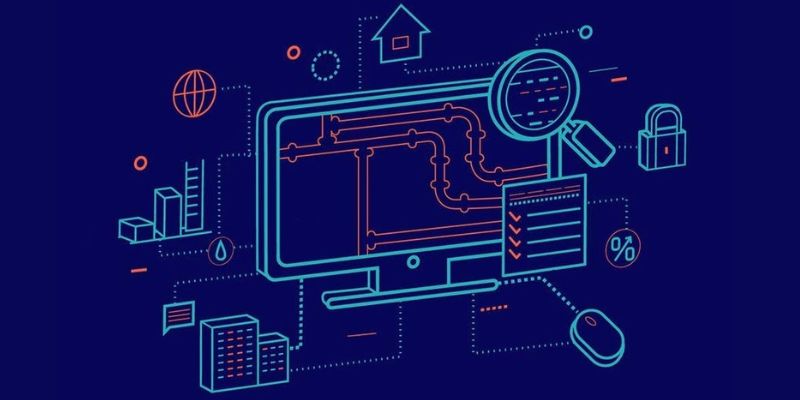
Software architecture is like the plan for building software. It shows how the software will be structured, what parts it will have, and how these parts will work together, all while keeping the inner workings hidden.
This plan helps the software development team clearly explain how they will build the software according to what the customers need. There are many ways to arrange the parts in software architecture, and these different arrangements are called software architecture patterns. Many patterns have been tried and tested, and most of them have successfully solved various problems. In each pattern, the parts are organized in a different way to solve a specific problem in software architecture. For professionals aiming to ensure the quality and reliability of the implemented software, exploring educational opportunities like Software Testing Course in Chennai can provide valuable insights into testing methodologies essential for delivering robust and error-free software solutions.
Now, instead of going through endless types of software architecture patterns, we’ll look at a few of the most important and commonly used ones.
Various Patterns of Software Architecture
- Layered Pattern
- Client-Server Pattern
- Event-Driven Pattern
- Microkernel Pattern
- Microservices Pattern
Layered Pattern
In the Layered Pattern, the software code is organized into different layers of tasks, stacked on top of each other. Each layer has its own unique job, and all layers work independently of one another. Because they are independent, you can change the code in one layer without affecting the others.
This pattern, also known as ‘N-tier architecture,’ is widely used for designing many types of software. Typically, it has four layers:
Presentation layer: This is where users interact with the application, entering and viewing data.
Business layer: Responsible for executing the business logic based on user requests.
Application layer: Acts as a bridge between the presentation layer and the data layer, facilitating communication.
Data layer: Manages the database and handles data-related tasks.
Ideal for: Developing e-commerce web applications, like Amazon, where there is a need for organised and independent layers to handle various tasks efficiently.
Client-Server Pattern
The Client-Server Pattern involves two main entities: a server and multiple clients.
In this pattern, the server holds resources like data, files, or services while clients make requests to the server for specific resources. The server processes these requests and responds accordingly.
Examples of software developed using this pattern include:
Email systems.
World Wide Web (WWW).
File sharing applications.
Banking software, and more.
This pattern is well-suited for developing software applications that involve interactions between clients and a centralised server, such as those mentioned in the examples. For individuals looking to deepen their understanding of software development processes and ensure the robustness of such client-server interactions, exploring educational opportunities like Software Testing Course in Bangalore can provide valuable insights into quality assurance and testing methodologies.
Event-Driven Pattern
Event-Driven Architecture (EDA) is an agile approach where software services or operations are triggered by events.
But what exactly is an event?
In the context of EDA, an event occurs when a user takes action in the application. This action leads to a state change, and a reaction is generated, known as an event.
For example, when a new user fills out the signup form and clicks the signup button on Facebook, the creation of a Facebook account for that user is considered an event. Understanding the intricacies of tracking and analysing such events can be crucial for professionals seeking to enhance their data analysis skills. Exploring educational opportunities like R Programming Training in Chennai can provide the necessary knowledge and expertise to navigate and interpret event data effectively.
Ideal for: Event-driven architecture is well-suited for building websites with JavaScript and, more broadly, for developing e-commerce websites.
Microkernel Pattern
The Microkernel Pattern consists of two main components: a core system and plug-in modules.
Core System: Manages fundamental and essential operations of the application.
Plug-in Modules: Handle extended functionalities, such as extra features and customised processing.
Imagine you’ve created a chat application allowing global texting without an internet connection. Later, you decide to add a voice messaging feature. With the microkernel pattern, you can seamlessly incorporate this feature as a plug-in, enhancing the existing application. For those interested in exploring advanced technologies and expanding their expertise, considering educational options like Artificial Intelligence Course In Bangalore can provide the skills necessary to integrate cutting-edge features like voice messaging seamlessly into innovative applications.
Microkernel pattern is ideal for
Product-based applications and scheduling applications. This pattern is well-suited for app development, especially when frequent updates and additional features are desired, akin to the continuous stream of new features like Instagram Reels and YouTube Shorts that captivate digital users.
Microservices Pattern
The Microservices Pattern involves creating an application by combining a collection of small, independent services. Instead of building one large application, individual programs are developed for each service or function, and these small programs are then grouped together to create a complete application.
In the microservices pattern, adding new features and making changes to existing services can be done independently without affecting other services. The modules in the application are loosely coupled, making them easy to understand, modify, and scale.
For example, Netflix is a widely recognised instance of a software application built using the microservices architecture. This pattern is particularly suitable for websites and web applications that consist of small, independent components. For individuals aspiring to delve into the intricacies of building such scalable and efficient applications, exploring educational opportunities like Python Training in Chennai can provide a solid foundation in programming skills essential for mastering architectures like microservices.
Also, check: Software Testing Interview Questions and Answers
